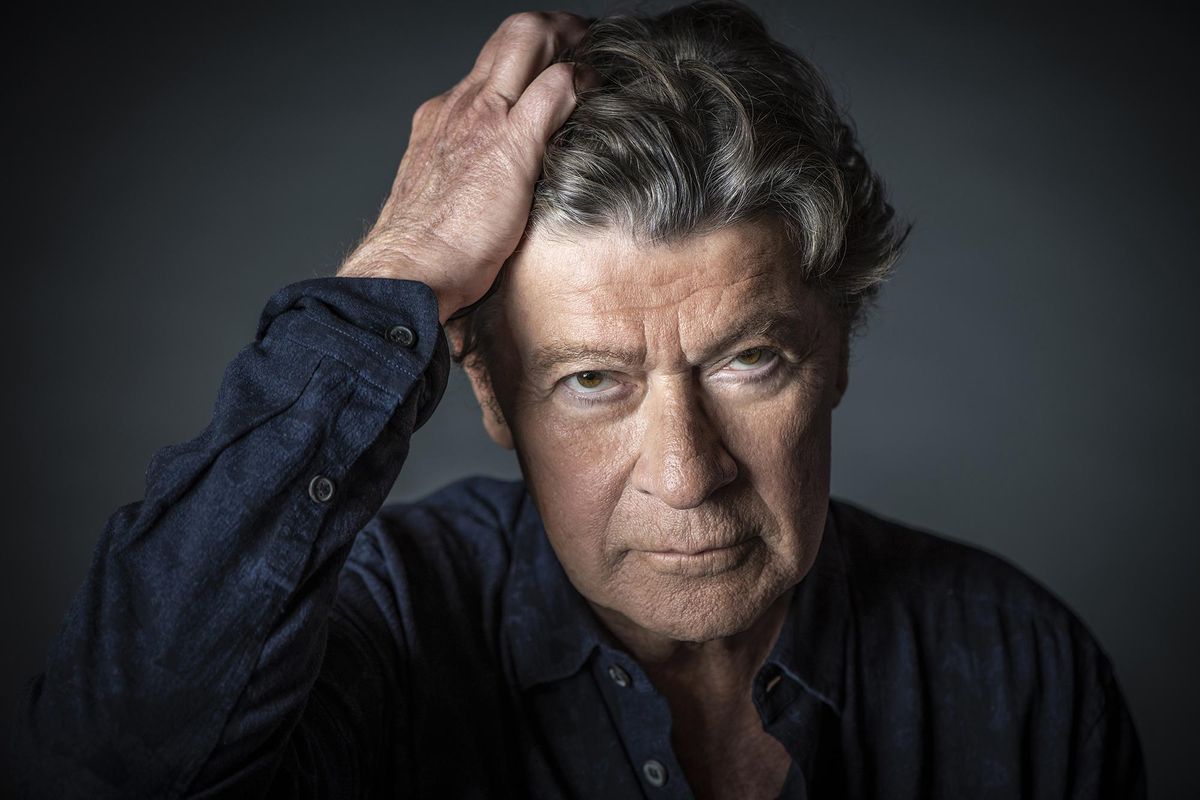Review: Music doc about the Band captures a time when something golden, incendiary and wistfully beautiful took place

For a collective expression of prodigious musicianship and an almost telepathic creative bond, you’d be hard-pressed to do better than the Band, the five-man group whose eight years performing under that name simultaneously sent rock music back to its past and catapulted it into the future.
In “Once Were Brothers,” co-founder Robbie Robertson recounts how as a teenager he was recruited to join the rockabilly act Ronnie Hawkins and the Hawks, where he befriended drummer Levon Helm and, later, Richard Manuel, Garth Hudson and Rick Danko. Their chops and professionalism honed to a flinty edge by near-constant touring and rehearsing, these cats were tighter than tight.
By the time they splintered off from Hawkins to form Levon and the Hawks, they could do just about anything for anyone who needed session support. When Bob Dylan enlisted them to back him up during his controversial electric tour in 1966, they endured what became a nightly ritual of setting up, playing, getting viciously booed and packing up for the next gig.
“I thought, ‘What a strange way to make a buck,’ ” Robertson, now 76, recalls with bemusement. For his part, Dylan calls the group “gallant knights for standing behind me.” It always seemed strange that Robertson, a frequent collaborator with Martin Scorsese, wasn’t included as a talking head in Scorsese’s Dylan documentary, “No Direction Home.”
Now it’s clear he was saving the good stuff for his cinematic memoir, which here includes additional observations by Scorsese (a producer of “Once Were Brothers”), Bruce Springsteen, Jann Wenner and Van Morrison. One of the most lively interlocutors is Hawkins himself, who provides welcome candor and scruffy humor to his memories of the young prodigies he turned into a cohesive unit on the club circuit.
One of the most memorable quotes comes from Eric Clapton, who visited the Band at their makeshift studio in the house near Woodstock, New York, that would come to be known as Big Pink. Awed by the sheer talent in his midst, he asked if they could jam. “We don’t jam,” came the reply. “It was a songwriting outfit,” Clapton says, still clearly impressed.
As compelling as “Once Were Brothers” is as cultural history, it’s not comprehensive: The subtitle, after all, is “Robbie Robertson and the Band,” and this is very much one man’s story (the film is adapted from his 2016 autobiography, “Testimony”). Danko, Helm and Manuel – the film’s most heartbreaking figure – are no longer with us to share their perspective, and Hudson isn’t talking.
Although there’s no doubt that drugs, alcohol, paranoia and resentments finally tore the group apart, “Once Were Brothers” wouldn’t have suffered from a few more dissenting voices to balance Robertson’s version of events, which even at its most generous and compassionate can’t help but feel self-serving.
Still, “Once Were Brothers” is enormously valuable, if only as a reminder of what an extraordinary run this extraordinary convergence of talents enjoyed until their final show on Thanksgiving Day in 1976 (meticulously captured by Scorsese in the magnificent documentary “The Last Waltz”).
Director Daniel Roher makes resourceful use of as much archival footage as he can gather, including vintage interviews with Band members who have since died; cutting still photographs together with whiplash speed, Roher does an admirable job of conveying the various periods in the Band’s short but brimming life together, from the raucous rustication of the Catskills to the more languorous Malibu era in the 1970s, when they recorded under star-making machine David Geffen.
The most delicious moments are simply listening to those great songs, from “The Weight” and “The Night They Drove Old Dixie Down” to the shattering valedictory performance of Dylan’s “I Shall Be Released.” Even at its most painful, the Band’s story captures something golden, incendiary and wistfully beautiful – “so beautiful,” Robertson reflects, “that it went up in flames.”